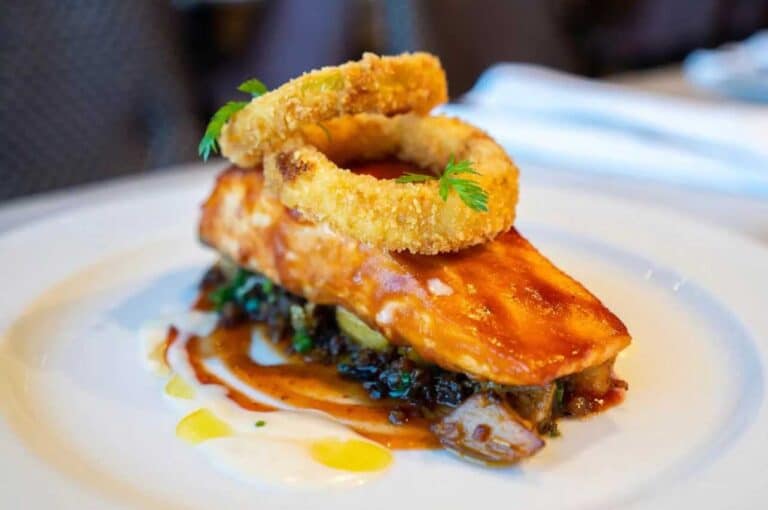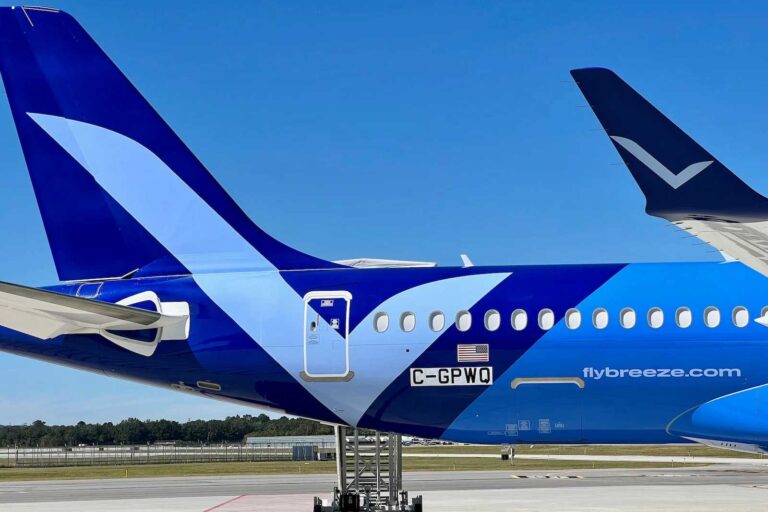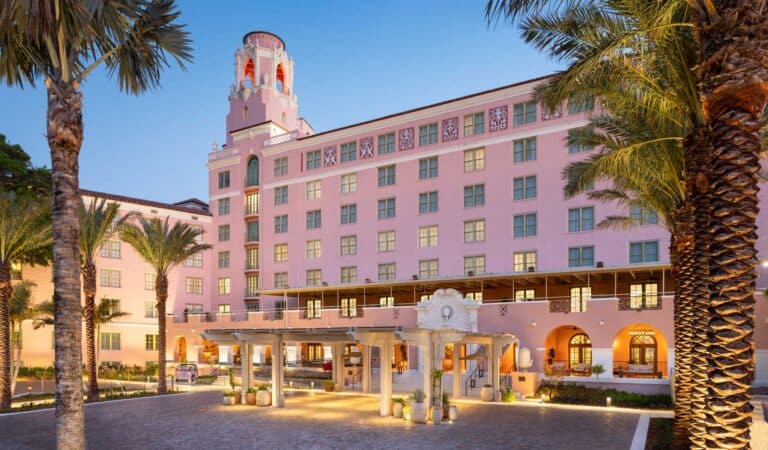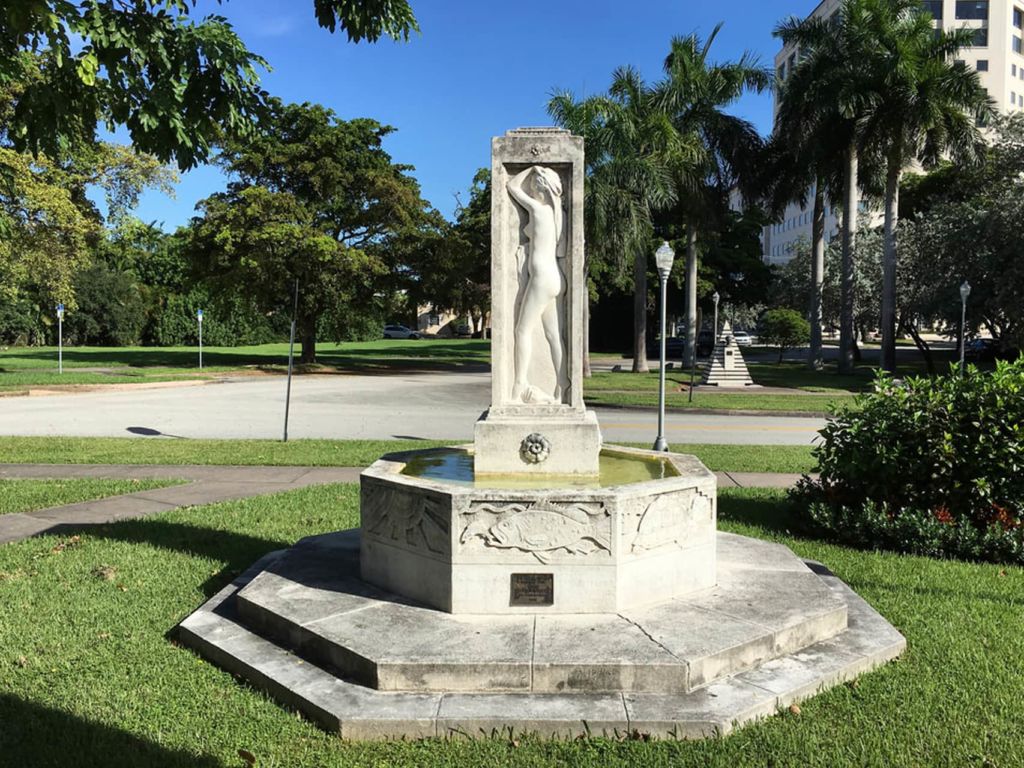
Drive along the banyan-ruled streets of Coral Gables past bubbling fountains and Mediterranean piazzas, and chances are you’ll forget you’re in the center of Florida’s largest metropolis. Instead, some faraway European city may come to mind, and that’s just how developer George Merrick wanted it. Named after the native rock where Merrick came of age in Massachusetts, Coral Gables was incorporated in 1925 as a planned city with areas designated for business, leisure and residential activities. Mediterranean Revival architecture, known for its arches and Roman loggias in the terra-cotta and sienna shades of the European seaside (which help counteract the effects of the sun), was meticulously chosen and quickly set the oldworld mood that makes this city of 42,000 stand out.
Even today, history is front and center. There’s a Board of Architects Review Panel, created at the city’s inception, along with a Mediterranean Architectural Ordinance that’s been in effect since 1986. the latter offers cash incentives to builders who conform to the Mediterranean Revival style. Paul George, Ph.D., resident historian at the Historical Museum of Southern Florida and a professor of history at Miami Dade College, believes the beauty of the area lies in the preservation of its history. “What’s been here the longest is what continues to remain some of the most attractive elements of the city,” he says. “The Merrick home, the Biltmore Hotel, the Douglas Arches — all these distinctive places that characterize the city were part of Merrick’s original vision.”
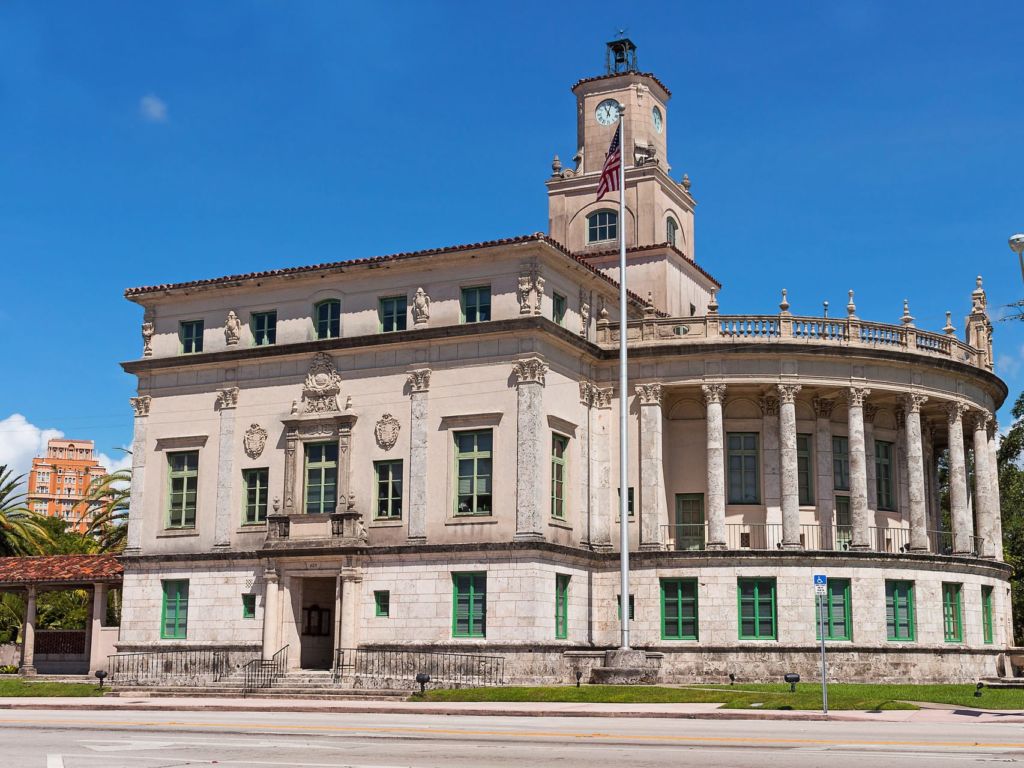
Quality of Life
Encompassing 37 square miles, Coral Gables sits between West Flagler Avenue and the Deering Bay Golf Course to the north and south, respectively, and LeJeune and Red roads to the east and west. Thirty percent of land here is dedicated green space. There are two public golf courses, numerous pocket parks tucked into residential areas and several canals that can accommodate large yachts, which are often seen docked along the 40 miles of waterfront-lot frontage.
The Coral Gables Waterway leads to the ocean and is a major manatee protection zone. Fairchild Tropical Botanic Garden offers regular movie and jazz nights as well as art exhibitions by the likes of Dale Chihuly and David Botero whose pieces are integrated into the lush foliage. In the surrounding homes, you’ll mostly find families. Rarely, if ever, do under-30 singles or first- time home buyers descend on the area. At an average price of $400 per square foot for a non-water- front, single family home, the houses are simply out of their price range. “Property values are high, so you have residents that have made a conscious decision to live here,” says Janet Gavarrete, a planner for the University of Miami, which is in Coral Gables. “Residents all seek the same thing: quality of life within a planned city that boasts tremendous beauty, grace and infrastructure.”
Coral Gables is a great place to raise a family. The traffic circles make it nearly impossible to speed through residential neighborhoods, and the city even has one of the lowest crime rates in Miami-Dade County. It also has its own police & fire departments. Chris Basick, a 14-year resident and real-estate agent with EWM, and experiences the city’s “wow-factor” regularly. “When my clients recognize the safety, the city services, the curb appeal of the homes, they are in awe,” he says.
After living in Miami Beach for nearly 20 years, Gladys Acosta moved to Coral Gables five years ago. “The homes here are not your typical suburban homes. They have character,” she says. “You can’t beat the location. You’re part of Miami, but you don’t get the awful traffic. You have everything you need, but you’re removed from the craziness.”
Heart of Town
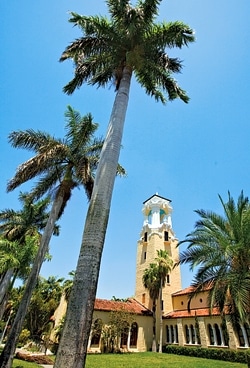
Just six miles west of downtown Miami, the city’s location attracts another 40,000 professionals to its downtown business district daily. Recognized as the commercial epicenter for Latin America and the Caribbean, Coral Gables is home to both national and regional headquarters for nearly 200 major American, European, Latin American and even Caribbean companies. With more than 6.5 million square feet of offIce space in such classic buildings as the Alhambra Towers and Columbus Circle, the city has the highest concentration of multinational companies in the state, with industries ranging from communications and IT to banking, manufacturing and international trade.
Miracle Mile is the east-west artery that divides the 20-square block business district. Suited-up business people, soccer moms running errands, local college professors and even ladies who lunch frequent more than 200 retailers and 70 restaurants daily. The area has long been a hub for high-end furniture stores and bridal salons. Downtown is also home to some of the city’s longest-running galleries and restaurants, such as Cacao and Ortanique on the Mile, where chef Cindy Hutson offers her “cuisine of the sun.” More top eateries include Gusto Fino Italian Deli Market, a gourmet market and café where Basick often picks up a prosciutto sand- wich. The market boasts authentic Italian ingredients in a slew of family recipes available for takeout.
One of downtown’s most notable features is the free, air-conditioned, hybrid trolley that travels along Ponce de Leon Boulevard. More than 4,000 people hop aboard one of these trolleys daily, which “expands the circumference of the walkable downtown business and retail district,” says Mari Molina, executive director of the Business Improvement District (BID). “It can even bring them all the way to downtown Miami because it connects to the Metrorail.”
In addition to restaurants and shops, downtown has also experienced a proliferation of condos in the past few years. Currently, about 158 units are for sale, with prices ranging from about $115,000 to $899,000, according to MLS. Despite the real-estate slowdown, condos “don’t stay on the market for long,” notes Molina. About 5,000 residents call downtown home.
While South Florida certainly isn’t known for its perambulators, a pedestrian-friendly downtown streetscape project is in the works. “We want to make downtown even more walkable. Plans to pinch the street will slow cars down, reduce traffic and enable us to widen sidewalks, making room for out- door kiosks, dining pavilions and benches,” reports Molina.
For year-round fun, the BID organizes a number of annual events, such as Coral Gables Restaurant Week, Carnival on the Mile and the Coral Gables Wine & Food Festival. The historic Miracle theatre brings high-caliber plays to the community. Stepping into the theater is like stepping back in time, and the city’s history shines through its 1948 architecture, especially the marquee — visible from nearly anywhere on Miracle Mile. Venetian Pool, built in 1923 from a coral rock quarry fed by an underground aquifer, is a family-friendly spot to cool off on hot days.
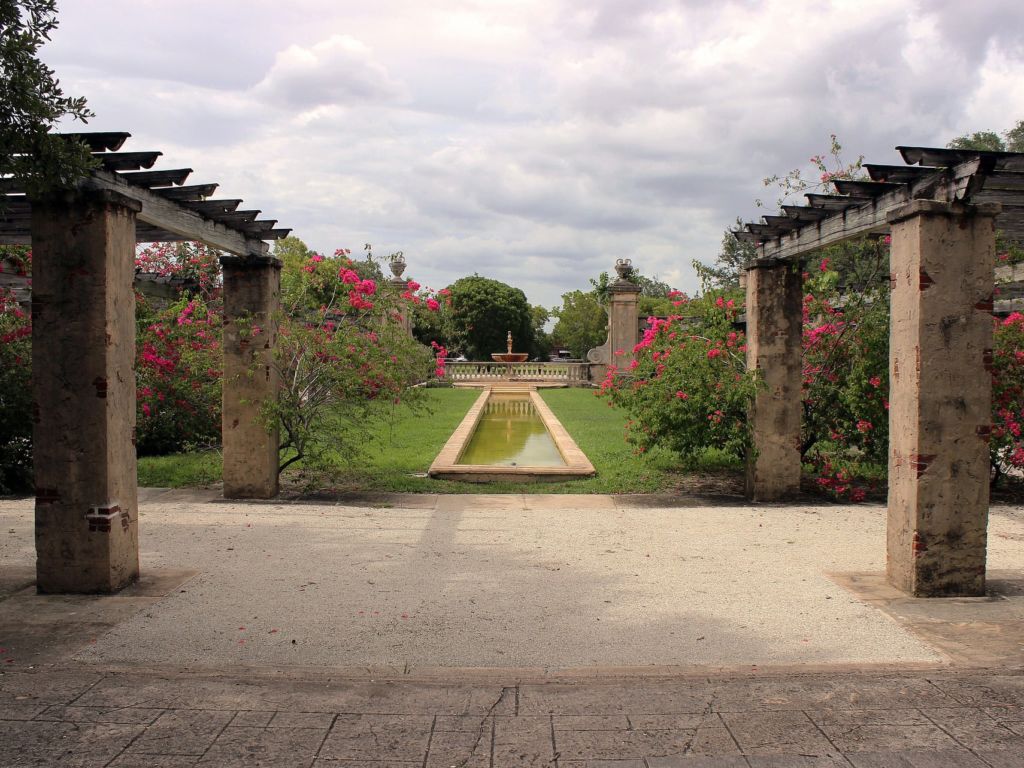
As if all that wasn’t enough, the University of Miami — located on 600 acres of land donated by Merrick, who also pledged an additional $5 million back in 1926 — offers the Lowe Art Museum, the Gusman Concert Hall and the Cosford Cinema. Though on UM’s campus, these facilities are quite frequently visited by many locals who come for the high-caliber art exhibitions, concerts, live theater and even independent films.
“UM was part of Merrick’s great vision. He believed every great city deserved a great university and truly recognized the value it held for a local community,” says Gavarrete. Merrick was right. “When anything happens at UM, the whole city feels it.” Amid all these vibrant activities, historic surprises still remain. In an effort to generate additional sales and diversify the mostly Mediterranean style of architecture, Merrick began adding themed villages to the community. His original plan included 14 distinct villages, such as French Normandy, Chinese, Dutch South African, Italian and Florida Pioneer, which would consist of 1,000 residences. Only seven — about 75 homes — were built due to the hurricane of 1926 and the ensuing depression.
Ralph Sanchez, a local developer, is doing his part to keep Merrick’s vision alive with the creation of Old Spanish Village. Incorporating details of Merrick’s original Spanish Village, such as cobblestone streets and arched entryways, the seven-acre downtown project includes condos and luxury town homes ranging from $400,000 to $2.5 million. Merrick may be long gone, but his dream continues.

